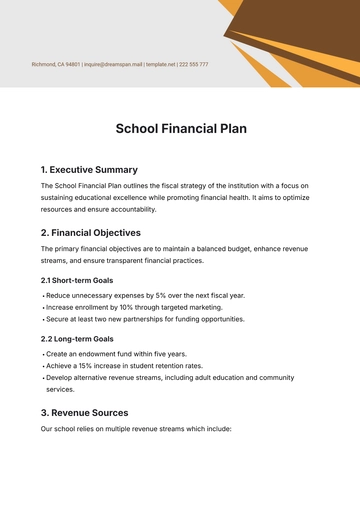Free High School Baseball Practice Plan

I. Overview
This practice plan provides a detailed overview of the framework and planned exercises for a high school baseball team practice session organized by [Your Company Name]. The primary objective of this plan is to foster the development of the players' individual and collective abilities, promote effective teamwork, and improve their overall physical fitness. By following this structured regimen, the players will be better equipped and prepared to perform competitively in their upcoming games.
II. Warm-Up and Stretching
To prevent injuries and prepare the body for the intense activities ahead, a proper warm-up and stretching routine is crucial. The session begins with a light jog around the field for about 5 minutes. This helps increase the heart rate, warm up the muscles, and get the players mentally prepared for practice.
Following the jog, dynamic stretching is conducted for about 10 minutes. Dynamic stretches include exercises such as arm circles, leg swings, high knees, and butt kicks. These movements are designed to improve flexibility and range of motion while also continuing to elevate the heart rate.
III. Throwing Drills
Throwing is a fundamental skill in baseball, and this section focuses on improving players' throwing accuracy and arm strength. The session starts with partner catch for 10 minutes, where players focus on proper throwing mechanics and accuracy. This drill helps players develop a consistent throwing motion and improves their ability to hit their target.
Next, players engage in long toss for 10 minutes. Long toss helps build arm strength and improves throwing distance. Players gradually increase the distance between them and their partner, focusing on a smooth, fluid throwing motion.
IV. Fielding Drills
Fielding is another critical skill in baseball, and this section focuses on improving both infield and outfield skills. Infield drills are conducted for 15 minutes, focusing on ground balls, double plays, and throwing to bases. Outfield drills follow for 15 minutes, focusing on fly balls, cutoff drills, and throwing to bases. These drills help players improve their fielding technique, footwork, and throwing accuracy.
V. Hitting Drills
Hitting is one of the most challenging skills in baseball, and this section focuses on improving players' batting skills and techniques. The session starts with tee work for 10 minutes, where players work on their batting stance and mechanics. This drill helps players develop a consistent swing and improve their contact with the ball.
Next, players engage in soft toss for 10 minutes. Soft toss helps improve hand-eye coordination and swing path. Finally, players participate in batting practice for 20 minutes, facing live pitching and focusing on situational hitting. This drill helps players adjust to different pitches and improves their ability to hit in game situations.
VI. Base Running Drills
Base running is an essential part of baseball, and this section focuses on improving players' speed and base running techniques. Speed drills are conducted for 10 minutes, focusing on sprinting techniques and base stealing. Sliding drills follow for 10 minutes, focusing on proper sliding techniques and situational base running. These drills help players become more aggressive and efficient base runners.
VII. Situational Drills
Baseball is a game of strategy, and this section focuses on improving players' understanding of different game situations. Defensive situations are practiced for 15 minutes, focusing on bunt defense, first and third situations, and cutoff plays. Offensive situations follow for 15 minutes, focusing on sacrifice bunts, hit and run plays, and situational hitting. These drills help players understand their roles in different game situations and improve their decision-making skills.
VIII. Scrimmage
Scrimmaging allows players to apply the skills and strategies they've learned in a game-like setting. The team engages in a full-inning scrimmage for 30 minutes, simulating game conditions and focusing on strategy and execution. Coaches provide feedback and guidance during the scrimmage to help players improve their performance.
IX. Cool Down and Review
After the intensity of practice, a proper cool down is essential for players' recovery and long-term health. The cool-down period should include static stretching and a brief team meeting to review the practice and prepare for future sessions.
A. Static Stretching (10 minutes)
Stretch | Description |
|---|---|
Hamstring Stretch | Players stand and reach towards their toes, holding the stretch for 15-30 seconds. |
Quad Stretch | Players grab their ankle and pull towards their glutes, holding the stretch for 15-30 seconds. |
Shoulder Stretch | Players bring one arm across their chest and hold it with the opposite hand, stretching the shoulder muscles. |
Groin Stretch | Players sit on the ground with the soles of their feet together, gently pressing their knees towards the ground. |
B. Team Meeting (10 minutes)
Discussion Point | Description |
|---|---|
Review Practice Performance | Coaches and players discuss what went well during practice and areas that need improvement. Players should be encouraged to provide feedback and ask questions. |
Discuss Upcoming Games and Strategies | Coaches outline the team's upcoming schedule and discuss strategies for upcoming opponents. This is also a time to discuss any changes in game plans or tactics. |
Q&A Session with Coaches | Players are given the opportunity to ask questions about anything covered during practice or about future games. Coaches should provide clear and detailed answers to ensure players understand the team's goals and expectations. |
C. Benefits of Cool Down
Reduces Muscle Soreness: Proper stretching helps to reduce muscle stiffness and soreness after intense exercise.
Improves Flexibility: Stretching after practice helps improve flexibility, which can enhance performance and reduce the risk of injuries.
Promotes Relaxation: Cool-down activities can help players relax and unwind after a challenging practice session.
Enhances Recovery: Cool-down activities increase blood flow to the muscles, which can help speed up the recovery process and reduce the risk of injury.
X. Conclusion
This detailed practice plan for the high school baseball team at [Your Company Name] covers all essential aspects of the game. By following this structured plan, the team will improve their skills, teamwork, and overall performance, ultimately leading to success on the field. Moreover, consistent adherence to this plan will instill discipline and a strong work ethic in the players, essential qualities for their development both on and off the field. Through regular practice and continuous improvement, the team will not only achieve their athletic goals but also develop a sense of camaraderie and sportsmanship that will benefit them throughout their lives.
- 100% Customizable, free editor
- Access 1 Million+ Templates, photo’s & graphics
- Download or share as a template
- Click and replace photos, graphics, text, backgrounds
- Resize, crop, AI write & more
- Access advanced editor
Plan effective baseball practices with Template.net's High School Baseball Practice Plan Template. This customizable and editable template, accessible via the Ai Editor Tool, helps coaches design comprehensive practice schedules. Personalize it to include drills and training objectives. Ensure structured and professional practice plans for high school baseball teams.
You may also like
- Finance Plan
- Construction Plan
- Sales Plan
- Development Plan
- Career Plan
- Budget Plan
- HR Plan
- Education Plan
- Transition Plan
- Work Plan
- Training Plan
- Communication Plan
- Operation Plan
- Health And Safety Plan
- Strategy Plan
- Professional Development Plan
- Advertising Plan
- Risk Management Plan
- Restaurant Plan
- School Plan
- Nursing Home Patient Care Plan
- Nursing Care Plan
- Plan Event
- Startup Plan
- Social Media Plan
- Staffing Plan
- Annual Plan
- Content Plan
- Payment Plan
- Implementation Plan
- Hotel Plan
- Workout Plan
- Accounting Plan
- Campaign Plan
- Essay Plan
- 30 60 90 Day Plan
- Research Plan
- Recruitment Plan
- 90 Day Plan
- Quarterly Plan
- Emergency Plan
- 5 Year Plan
- Gym Plan
- Personal Plan
- IT and Software Plan
- Treatment Plan
- Real Estate Plan
- Law Firm Plan
- Healthcare Plan
- Improvement Plan
- Media Plan
- 5 Year Business Plan
- Learning Plan
- Marketing Campaign Plan
- Travel Agency Plan
- Cleaning Services Plan
- Interior Design Plan
- Performance Plan
- PR Plan
- Birth Plan
- Life Plan
- SEO Plan
- Disaster Recovery Plan
- Continuity Plan
- Launch Plan
- Legal Plan
- Behavior Plan
- Performance Improvement Plan
- Salon Plan
- Security Plan
- Security Management Plan
- Employee Development Plan
- Quality Plan
- Service Improvement Plan
- Growth Plan
- Incident Response Plan
- Basketball Plan
- Emergency Action Plan
- Product Launch Plan
- Spa Plan
- Employee Training Plan
- Data Analysis Plan
- Employee Action Plan
- Territory Plan
- Audit Plan
- Classroom Plan
- Activity Plan
- Parenting Plan
- Care Plan
- Project Execution Plan
- Exercise Plan
- Internship Plan
- Software Development Plan
- Continuous Improvement Plan
- Leave Plan
- 90 Day Sales Plan
- Advertising Agency Plan
- Employee Transition Plan
- Smart Action Plan
- Workplace Safety Plan
- Behavior Change Plan
- Contingency Plan
- Continuity of Operations Plan
- Health Plan
- Quality Control Plan
- Self Plan
- Sports Development Plan
- Change Management Plan
- Ecommerce Plan
- Personal Financial Plan
- Process Improvement Plan
- 30-60-90 Day Sales Plan
- Crisis Management Plan
- Engagement Plan
- Execution Plan
- Pandemic Plan
- Quality Assurance Plan
- Service Continuity Plan
- Agile Project Plan
- Fundraising Plan
- Job Transition Plan
- Asset Maintenance Plan
- Maintenance Plan
- Software Test Plan
- Staff Training and Development Plan
- 3 Year Plan
- Brand Activation Plan
- Release Plan
- Resource Plan
- Risk Mitigation Plan
- Teacher Plan
- 30 60 90 Day Plan for New Manager
- Food Safety Plan
- Food Truck Plan
- Hiring Plan
- Quality Management Plan
- Wellness Plan
- Behavior Intervention Plan
- Bonus Plan
- Investment Plan
- Maternity Leave Plan
- Pandemic Response Plan
- Succession Planning
- Coaching Plan
- Configuration Management Plan
- Remote Work Plan
- Self Care Plan
- Teaching Plan
- 100-Day Plan
- HACCP Plan
- Student Plan
- Sustainability Plan
- 30 60 90 Day Plan for Interview
- Access Plan
- Site Specific Safety Plan





























